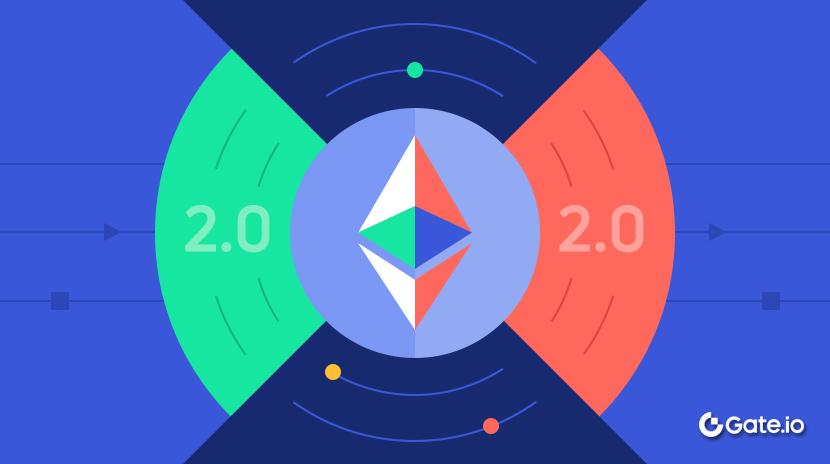Bitcoin Dips Again — 2026 Could Be the Best Time to Position
Reposted Original Title: “Bitcoin Ghost IPO Moment V2: Dawn”
When the Bitcoin community slipped into despair over its ongoing consolidation and lackluster performance compared to equities, I wrote “Bitcoin’s Silent IPO.” My thesis was that Bitcoin’s discouraging consolidation while other assets rebounded isn’t a sign of weakness—it’s a necessary distribution phase. Early whales finally experienced their liquidity event, systematically selling their holdings to deep institutional buyers created by ETFs and corporate treasuries. Much like the expiry of a traditional IPO lock-up period, the process feels uncomfortable and drawn out, but it is ultimately healthy in the long run.
Now, the consolidation pattern has broken. Distribution from the “Silent IPO” triggered a sharper correction. At the same time, retail-driven speculation in AI stocks led the broader equity market into a pullback. I highlighted this shift in my weekly video last weekend. This move turned Bitcoin’s year-to-date gains into slight losses. What used to be cognitive dissonance frustrating the crypto community has morphed into outright bearish sentiment and skepticism. The optimism of “Liberation Day” feels remote. Talk of the end of the four-year cycle is louder than ever. The idea that “Bitcoin has lost its upside” is echoing on X, and even those who claimed “this time is different” are beginning to capitulate.
This fall, the CMC Crypto Fear & Greed Index has plunged to lows last seen around Liberation Day—15. Hope seems exhausted. That’s why it’s time for “(Part Two).” For me, the core idea remains unchanged from Liberation Day. All assets are now driven by advances in AI, and I maintain that investors will eventually realize in the years ahead that they missed the real story. The purest AI narrative is Bitcoin itself.
Beyond their near-identical birthdays—Bitcoin’s white paper debuted in 2008, and the pivotal 2009 Raina–Madhavan–Ng paper proved GPUs could accelerate deep learning by over 70x, sparking the GPU-powered machine learning era—both are essential to exponential innovation.
Exponential innovation is reducing the necessity of office work, or even working at all. It’s driving wealth inequality, forcing governments worldwide to run deficits and pushing financial assets higher as a form of universal basic income (UBI). Today’s UBI isn’t a government check—it’s Universal Beta Income: your wealth grows because the system has no alternative. For those without assets, transfer payments are the other form of UBI. This breeds the K-shaped economy, fueling labor anxiety, wage pressure from shrinking jobs, and inflation driven by government UBI, making living costs unaffordable for most and sparking anger. Bitcoin benefits from this spiral, staying relevant among risk assets before AI consumes capitalism and public markets. Stablecoins and AI agents speed up money circulation, reducing leverage needs; tokenization enables dormant assets—real estate, private debt, private equity, venture capital—to trade 24/7, lowering required leverage to maintain prices. As AI advances, deflationary pressure will emerge. By 2026, AI-powered drug discovery, autonomous taxis, and AI agents will drive price inflation through higher margins and intense competition from commoditized intelligence.
This is what makes the current moment so compelling: Investors feared Bitcoin lagged equities during rallies, but now its performance matches expectations. As the stock market pulls back—especially bubble-prone AI stocks—Bitcoin is falling in tandem. The divergence that confused everyone in the “Silent IPO” phase has vanished. Bitcoin now trades as a risk asset, correlated with growth expectations and liquidity. In my view, this sets the stage for the buying power and momentum needed to begin the next bull run.
Looking ahead to 2026, I see it again—light at the end of the turmoil. Just as April’s tariff panic presented a buying opportunity for those who saw through the fear, this synchronized correction in Bitcoin and broader risk assets is laying the foundation for the next major rally.
Bitcoin and Equities Rise Together: Why That’s Bullish
A long-standing misconception is that Bitcoin should trade independently of traditional risk assets. This argument claims Bitcoin is digital gold, a hedge against the current system, and uncorrelated with equities. So, if Bitcoin sells off when equities do, something must be wrong.
This is a fallacy. Bitcoin is a risk asset. I wrote about this in my Substack piece, “Yes, Virginia, Bitcoin Is a Risk Asset.”
Yes, Bitcoin has store-of-value properties. Yes, it’s decentralized. But from a market psychology and capital flow perspective, Bitcoin behaves like a high-beta risk asset. ETF buyers allocate Bitcoin alongside stocks, and when they de-risk, they sell both. Retail traders use the same capital for crypto and equities. Even those worried about currency devaluation are more aggressive buyers when the economy and cash flow are strong.
So, when the Nasdaq drops, Bitcoin drops. When AI stocks get hit, Bitcoin gets hit. This isn’t a flaw—it’s a feature. Given its ownership base, Bitcoin’s performance is rational.
That’s the bullish case: If Bitcoin moves with risk assets, its outlook is tied to the broader risk asset outlook. To understand Bitcoin’s future, you must understand where equities are headed.
Here’s why I’m extremely bullish on risk assets through 2026.
2026 Outlook: Fiscal, Monetary, and AI Convergence
The market climbs a wall of worry. Today, that wall is built from the AI bubble, recession fears, and crypto pessimism. Yet 2026 still looks promising.
Fiscal support is ongoing. The Infrastructure Act, CHIPS Act, and Inflation Reduction Act aren’t just words—they’re multi-trillion-dollar spending plans fueling real economic activity and deficits. This “big and beautiful” legislative bundle was rolled out ahead of the midterms. Data centers are rising at record speed, semiconductor plants are appearing, and electrical infrastructure is being upgraded.
The Fed has room to cut rates. Inflation is under control. This year, wages, housing, and oil prices have been pressured, so as tariffs take effect, inflation should stay manageable relative to labor market weakness. AI is a deflationary force and a disruptor of labor.
AI breakthroughs are near. The past year has seen astonishing progress. We’re about to witness real-world, mainstream advances:
AI drug discovery: The first AI-designed drugs are nearing clinical trials. Once positive results arrive, the impact on healthcare and productivity will be massive. Pharma stocks just had their best relative month in three decades. Every pharma company will rush to integrate AI into R&D. Billions will flow into AI-driven healthcare.
Autonomous vehicles: After years of “five years away,” we’ve reached an inflection point. Waymo is expanding. Tesla’s FSD keeps improving. Chinese firms are rolling out driverless taxis at scale. By 2026, when self-driving cars are mainstream in major cities, speculation about humanoid robots will skyrocket.
AI agents and productivity: Autonomous AI agents capable of complex tasks will proliferate across enterprise software, customer service, and creative industries. The productivity impact will be enormous, expanding profit margins across the economy. AI will make every sector more efficient, productive, and profitable.
Manufacturing is rebounding. AI infrastructure build-out is reviving US manufacturing. After years of contraction, the sector is showing signs of recovery. I expect the PMI to rise in 2026, fueled by these catalysts. Historically, when PMI rises, crypto—especially altcoins—performs superbly.
Bears will yell “AI bubble!” Maybe. But bubbles always last longer and climb higher than anyone expects. The dot-com bubble didn’t peak in 1997 when valuations first seemed crazy, but in March 2000, three years later. From late 1994 to late 1999, the Nasdaq 100 (QQQ) rose 800%. In the past five years, QQQ is up less than 100%. By dot-com standards, this is barely a bubble. If we’re in an AI bubble, it’s still early or mid-stage. Mainstream investors haven’t fully entered. Your relatives aren’t asking about AI stocks at Thanksgiving yet. That’s coming—and I believe in crypto.
Bubbles need a catalyst to burst, usually aggressive Fed tightening during economic weakness. But the Fed has already tightened. They may begin rate cuts in 2026, not another tightening cycle. The typical catalyst is absent.
Bitcoin’s 2026 Catalysts
If risk assets rally in 2026, Bitcoin—a high-beta risk asset—should outperform. But Bitcoin has unique catalysts that make its outlook even stronger.
The Clarity Act: Years of regulatory uncertainty have stymied crypto. The Clarity Act is expected to pass by late 2025 or early 2026, providing clear rules, jurisdictional certainty, and eliminating the legal ambiguity that kept institutions away. The “waiting for regulatory clarity” crowd—including the biggest asset managers and pension funds—will finally be able to allocate. Compared to what’s coming, current ETF flows are tiny.
Tokenization is scaling: Major institutions are tokenizing treasuries, real estate, commodities, and equities. JPMorgan, BlackRock, Franklin Templeton, and others are building tokenization platforms. This validates crypto infrastructure and proves blockchain’s utility beyond digital gold. As tokenization scales and dormant assets trade around the clock with less leverage, Bitcoin’s role as a neutral settlement asset—the TCP/IP of digital finance—will grow.
Stablecoin acceleration: This is the most underrated bullish factor. Global stablecoin adoption is exploding, especially in developing economies. Tether and USDC are becoming the dollar rails for much of the world. When someone in Nigeria gets paid in USDC instead of naira, when an Argentine business holds dollar stablecoins instead of pesos, and when cross-border payments use stablecoins instead of correspondent banks, crypto infrastructure becomes essential for global business.
Stablecoins and Bitcoin aren’t rivals—they’re two parts of a system. Stablecoins are the medium of exchange for the digital economy; Bitcoin is the store of value. As more activity and money flows into the digital economy, more ends up in Bitcoin. Think of stablecoins as digital M2, and tokenization as the bridge pulling traditional fiat assets into the system. This creates powerful network effects: Stablecoin adoption brings millions of new users into crypto, and when they convert out of stablecoins, they need a long-term store of value. Bitcoin becomes the default. Stablecoin growth drives network effects that will accelerate Bitcoin adoption in ways that are hard to model but obvious in hindsight.
History Repeats
Decades in markets have taught me: Initial lows almost always get retested. We saw it in April—markets bounced, retested the lows, then rallied. This pattern is normal and healthy, allowing support to form and weak hands to be shaken out.
I expect Bitcoin may follow suit. We may have hit an initial low, but a retest is likely in the weeks ahead. As the last weak holders capitulate, another selling wave may hit. There could be a final shakeout, briefly sending Bitcoin even lower.
If we see a double bottom, it’ll be the year’s best trade. Because during the retest, smart money that missed the first bottom gets a second chance. The double bottom, marked by fading volume and panic, confirms the initial low as the true bottom. I’m not waiting for the retest. For both Bitcoin and stocks, I believe this area—when the Greed Index is extremely low—is the perfect time to exploit market fear.
Bitcoin is down on the year. Selling by early “Silent IPO” holders (OGs) may not be finished, but it’s late stage. Ownership is more decentralized than ever. Retail is bearish and sidelined. ETF buyers are patiently accumulating. Those hedging fiat devaluation keep systematically buying. Developing countries are steadily adopting Bitcoin as financial infrastructure.
Meanwhile, the outlook for 2026 is exceptionally bright. Fiscal support will persist. Monetary policy will be a tailwind. AI breakthroughs will drive speculation and real earnings growth. Manufacturing is expanding. The Clarity Act will deliver regulatory clarity. Tokenization is scaling. Stablecoins are fueling network effects.
Bitcoin’s path mirrors risk assets. Risk assets are poised to perform strongly in 2026. So is Bitcoin.
The Light Is There
I always remember “Liberation Day.” The S&P 500 fell 20%, economists predicted recession, panic selling erupted. Yet I believed that six months later, we’d look back and see the panic was unnecessary. I was right.
I feel the same about Bitcoin now. Yes, this correction is painful. Yes, sentiment is terrible. The Fear & Greed Index is at 15, matching Liberation Day’s low. But corrections in bull markets always feel like the end of the world. Every pullback seems different, convincing people the rally is over.
But for those who see through the fear, it’s always a buying opportunity.
In my trading career, I’ve lived through enough crises—Mexico in 1994, Brazil in 1998, the Global Financial Crisis, COVID, Liberation Day—to know these periods, though unsettling, are never as frightening as they seem. One truth emerges: If you see through the fear, these moments offer the best investment opportunities.
Bitcoin hasn’t collapsed, and digital assets aren’t going away. Everything unfolding now makes sense—a maturing risk asset still recovering from the 2022 winter. Amid current uncertainty and portfolio adjustments, it’s correcting alongside other risk assets. Unlike April, this correction is narrower, focused on growth stocks and crypto, not broad market panic. That’s healthier, with the market differentiating. When recovery comes, it may be sharper and more concentrated.
For those with vision, now is the time to accumulate. Not recklessly, not with leverage, not with money you can’t afford to lose. But thoughtfully, based on fundamentals, not market sentiment, with conviction.
In this era of AI-powered alpha, markets will be volatile. Governments will struggle to manage this disruption, and there will be dramatic moments ahead. Doubt will surface, headlines about crashes and bear markets will dominate. Ignore them—focus on fundamentals. AI is the most important, most powerful innovation of our lifetimes, and it will bring brighter days ahead.
When everyone sees the light, entry will be too late. Now is crypto’s moment—Fear & Greed Index at 15, capitulation underway, tunnel still dark.
Six months from now, just as on Liberation Day, Bitcoin’s narrative will be totally different. Looking back at today’s prices and sentiment, you’ll wonder why you ever doubted.
The light is there. You just have to choose to see it.
Statement:
- This article is republished from [DefiLlama24], original title: “Bitcoin Ghost IPO Moment V2: Dawn,” copyright belongs to [ Jordi Visser ]. If you have any objections to this republication, please contact the Gate Learn team ), and we will address your concerns in accordance with our procedures.
- Disclaimer: The views and opinions expressed in this article are solely those of the author and do not constitute investment advice.
- Other language versions have been translated by the Gate Learn team. Unless Gate is specifically cited, translated content may not be reproduced, distributed, or used without permission.
Related Articles

The Future of Cross-Chain Bridges: Full-Chain Interoperability Becomes Inevitable, Liquidity Bridges Will Decline

Solana Need L2s And Appchains?

Sui: How are users leveraging its speed, security, & scalability?

Navigating the Zero Knowledge Landscape

What is Tronscan and How Can You Use it in 2025?
